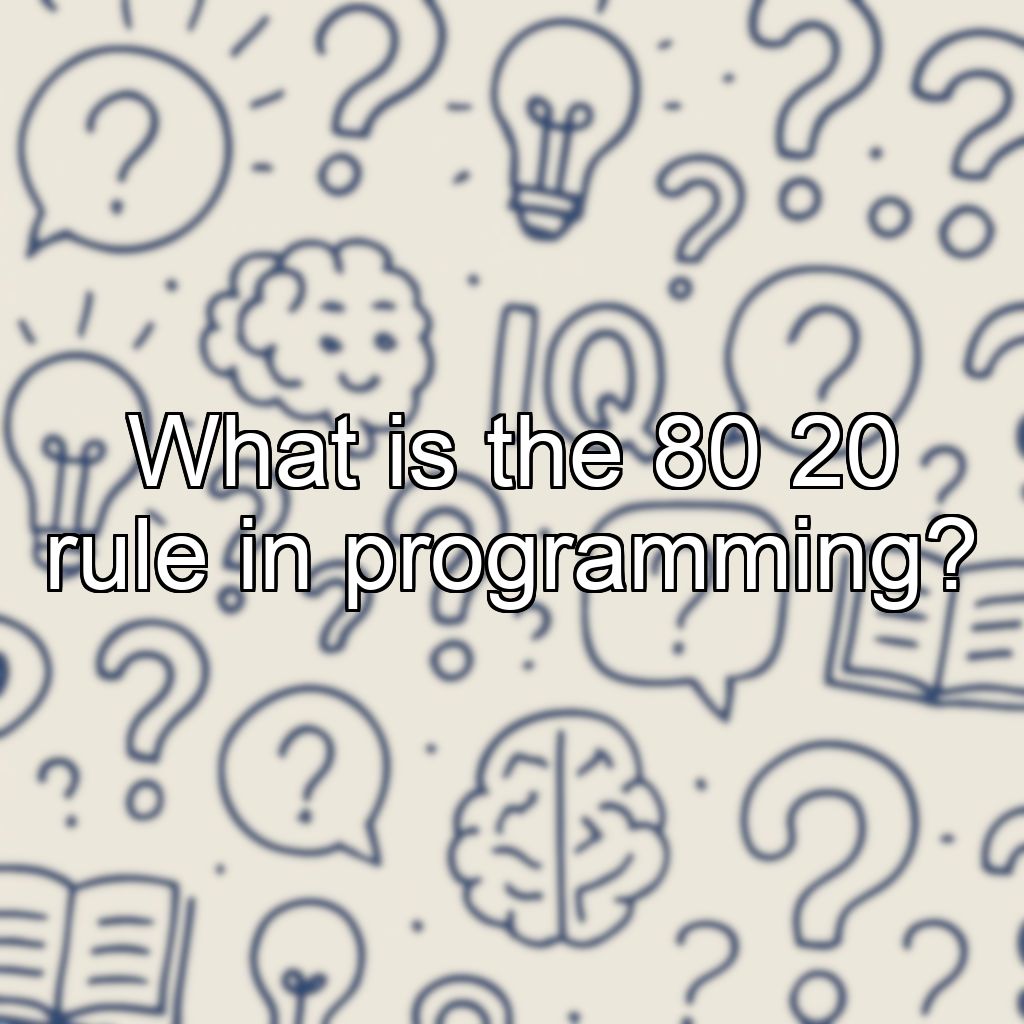What is the 80 20 rule in programming?

The 80/20 Rule in Programming
The 80/20 rule, also known as the Pareto Principle, is a concept borrowed from economics and applied in many fields, including programming. It states that roughly 80% of effects come from 20% of causes. In software development, this principle often manifests in several ways:
- Code Usage: Around 80% of a program’s execution time is spent in 20% of its code. This means that optimizing that critical 20% may lead to significant performance improvements.
- Bug Distribution: Approximately 80% of software bugs are found in 20% of the codebase. Focusing testing and code reviews on these areas can be more efficient.
- Feature Usage: About 80% of users typically use only 20% of a software's features, indicating that the most-used features should receive the most attention for usability and reliability.
Implications
- Performance Optimization: Profile your application to identify the "hot spots" (the 20%) and prioritize optimizing them.
- Bug Fixing: Analyze and refactor problematic modules where bugs cluster.
- Feature Development: Focus development resources on improving and maintaining the most valuable and frequently used features.
The 80/20 rule is not a strict law but a heuristic that helps prioritize efforts for maximum impact in programming projects.